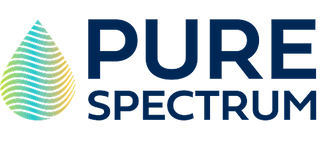In a recent poll by CS Motts Children’s Hospital, one-third of parents (35%) think taking CBD is essentially the same as using marijuana. This simply isn’t true.
CBD is derived from the hemp plant. Hemp and marijuana are the same plant species; they’re just two different names used to describe cannabis. Legally the only difference between hemp and marijuana is THC content. Hemp is a term used to classify cannabis plants containing 0.3% or less THC content, whereas marijuana is used to classify cannabis plants containing more than 0.3% THC. THC is the compound in cannabis that produces intoxicating effects. CBD is non-intoxicating, meaning CBD will not produce any “high” or cognitive impairment.
THC and CBD both interact with a system in the body known as the endocannabinoid system. However, the way these compounds interact within this system is very different. The two main receptors in the endocannabinoid system are CB1 receptors (primarily found in the brain and central nervous system), and CB2 receptors (primarily found in the immune system and peripheral nervous system). The high from THC comes from binding with CB1 receptors. CBD does not bind to CB1 receptors as THC does, meaning it doesn’t produce the same intoxicating effect.
There is a massive cultural stigma surrounding cannabis despite extensive research showing the plant’s beneficial properties. The image painted of cannabis has long clouded public perception, causing many misconceptions to follow. Any compound associated with cannabis, such as CBD, is met with harsh criticism and reluctance despite the immense therapeutic potential. Many people who could benefit significantly from the plant have been steered away by outdated claims.
Why Does Cannabis Have a Bad Reputation?
The stigma surrounding cannabis has a long, convoluted history. Many Americans were first introduced to cannabis through a series of films called Reefer Madness. Reefer Madness was released in 1936 with the sole intention of spreading false information and creating mass hysteria. The films display innocent people trying cannabis and rapidly descending into madness. At the time, cannabis propaganda could be found everywhere, from newspapers to being played in theaters before feature films.
The cultural resentment of cannabis spread like wildfire. During Richard Nixon’s presidency, drug abuse was declared “public enemy number one.”. As part of Nixon’s anti-drug campaign, congress passed the Controlled Substances Act of 1970. This act created various legal classifications, or schedules, for different types of drugs. Cannabis was placed in schedule I, the most restrictive category. A schedule I substance is a substance deemed to have no medical benefit and a high potential for abuse. This act classifies cannabis as having the same potential for abuse as heroin.
In the 1980s, anti-drug programs such as DARE (Drug Abuse Resistance Education) began sprouting up. These programs painted cannabis as a “gateway drug,” further tainting the public perception.
Breaking the Stigma Against Cannabis
In recent years, significant progress has been made to educate the public on cannabis, but there is still much work to be done. The poll by CS Motts Children’s Hospital also found 71% of those surveyed have never tried a CBD product themselves. We believe if it weren’t for the harmful rhetoric of the past, this number would be significantly lower.
At Pure Spectrum, we are committed to breaking the stigma of cannabis and educating the public on the healing powers of hemp. Taking CBD can lead to a greater quality of life without getting you high or interfering with your daily life. Taking a CBD product is in no way similar to smoking marijuana, despite what many still believe.

